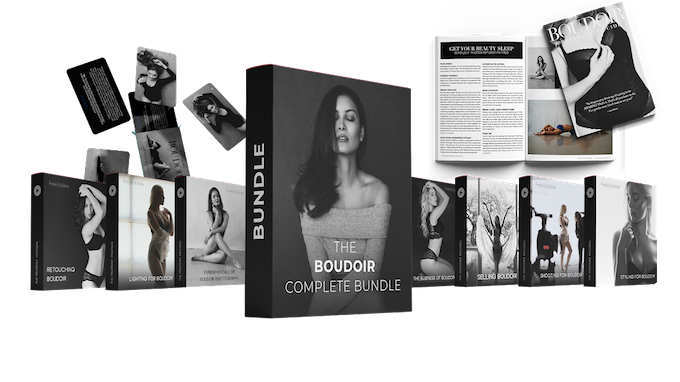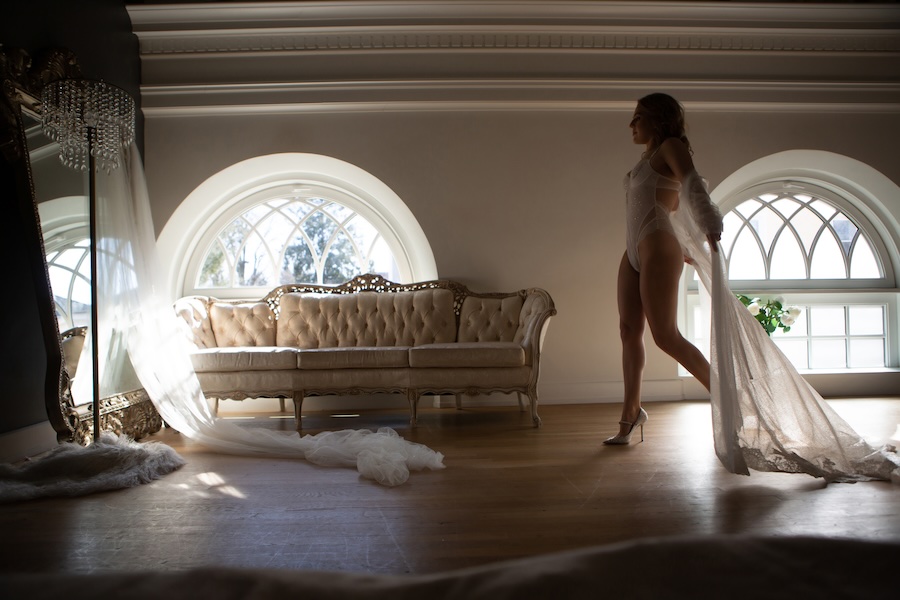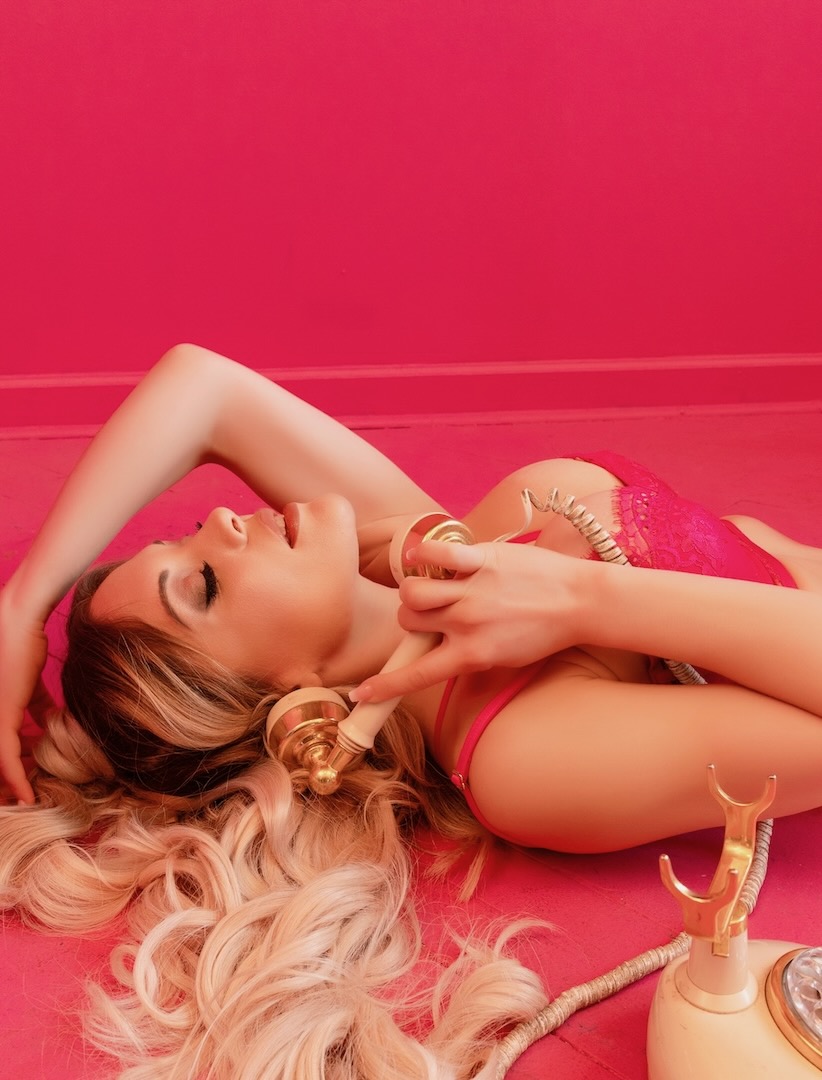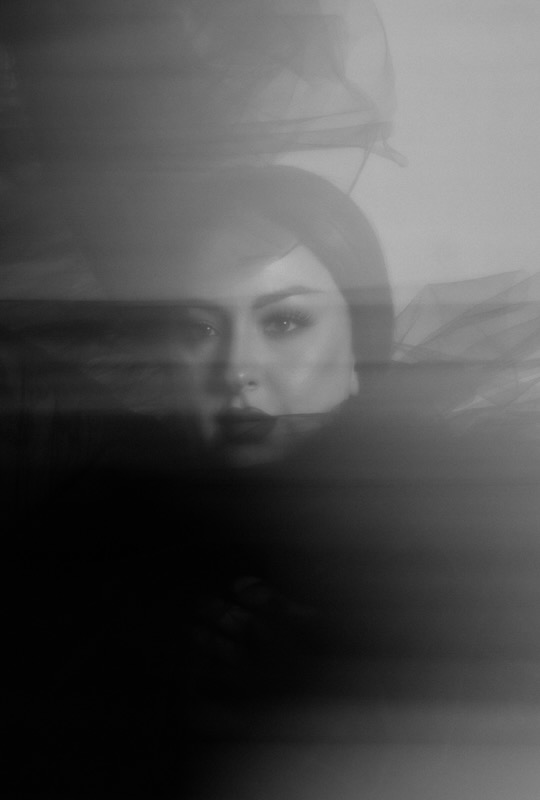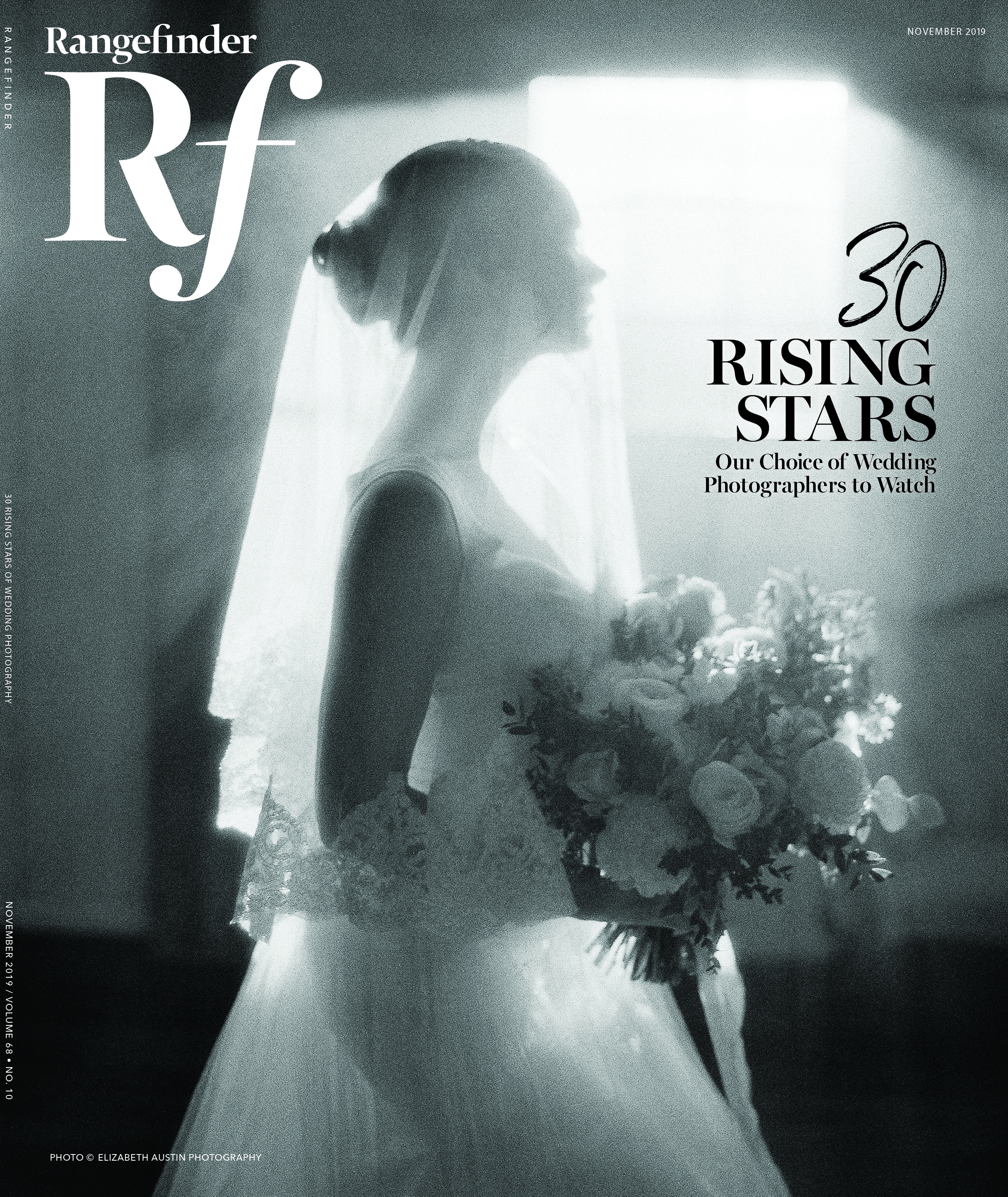Boudoir
How to Start a Boudoir Photo Business That Stands Out
January 20, 2022
When people enter Shawn Black’s studio for a boudoir photography session, he wants them to leave feeling completely empowered by their time there. “It’s about creating that full experience that is going to be potentially life-changing for your clients,” he said during his recent webinar, “How to Build a Boudoir Photography Brand That Stands Out,” which ran as part of Rangefinder + WPPI’s Reset series. Boudoir sessions are not only empowering for clients; starting a boudoir photography business can also be profitable for photographers.
Based north of Boston, Massachussets, Black recently moved his photography business into a 3,000-square-foot studio with 13-foot-high ceilings replete with a glam room, a client lounge area, a wardrobe closet and a bed for posing boudoir clients. On average, Black, who works with his wife, Michelle, shoots 125 boudoir sessions a year and makes an average of $3,500 to $4,000 per session in his studio, which is usually booked out six months in advance. While he shoots mostly women of all ages and body types, he also photographs male clients.
[Read: Boudoir Photo Shoot Ideas—Start with a Bare Wall]
He crafted his studio space to make clients feel empowered and comfortable from the moment they walk in the door: Wall art shows past clients looking like bombshells during their sessions; Michelle acts as a cheerleader throughout the entire process; and clients are assured that he will pose them down to their fingertips so that they can move out of their own heads.
In fact, there are four poses that he uses to create exceptional boudoir photography, useful to anyone starting a boudoir photography business:
- A pose that will flatter every client
- A more advanced boudoir pose that will highlight a client’s derrière
- “The Cleopatra Look”
- The final pose on a chair
[Read: Successful Boudoir Photography—Finding Your Style, Starting Your Business]
4 Poses to Try as You’re Starting a Boudoir Photography Business
1. A pose that will flatter every client
The first boudoir photography pose Black outlines involves a simple lighting setup (it can even be achieved using only natural light). The client lies on the studio’s bed on her back. Then, he lights her with a Geekoto strobe with a 1 x 4 Westcott softbox. He lights the subject’s body at a 45-degree angle so that she has beautiful contours across her curves.
[Read: Boudoir Photography Posing Guide—How to Flatter Every Client]
When Black poses a client, he tries to create as many triangles as possible—for example, in the curve of an elbow or leg. For this pose, which Black says will flatter 99 percent of people, he has the model put her legs up on the headboard, arch her shoulders, and then tilt her head backward so that she is looking at the camera upside down.
Generally, Black notes, he shows the client the first few shots he takes in this boudoir photography pose so that they realize that they look great and can begin to relax into more complicated poses.
2. A more advanced boudoir photography pose that will highlight a client’s rear
Here, the client sits facing away from the camera on a chair so that her rear end is exposed. Many clients like to purchase this shot as wall art because it is relatively anonymous, Black says. He likes to light the subject so that she appears to be rimmed with light around her entire silhouette—this ends up creating a beautiful hourglass shape.
To create the boudoir photography hourglass effect, Black places two strobes on either side of his client at a 45-degree angle, lined up to the focal plane of her body. This pose is slightly more advanced because a client needs to back up on the chair to the point where she almost feels like she is falling off. Then, he has the client arch her back and raise up her arms to create triangles and curves.
3. “The Cleopatra Look”
While you might not have a bed or even a lounge chair in your boudoir photography studio, you always have a floor to work with. For people with limited space or resources, this pose is perfect.
Black has his client lie on the floor on her side, propped up on one elbow. She is then lit overhead with a softbox attached to a boom.
Black notes that he usually shoots underexposed images that he can lighten in post-production. In general, he shoots between 400 and 640 ISO. His f-stop is generally 4 on a 24-105mm Canon R lens.
4. The final boudoir photography pose on a chair
While shopping for studio furniture in IKEA during the pandemic, Black bought a white lounge chair that he has since used so frequently that he needs to buy another one. He loves to pose his boudoir photography subjects lying across the chair with their bodies almost falling off the edge.
To create triangles of light and skin, he has his model support herself with one leg while holding the other one on the arm of the chair, foot pointing upwards. This pose is a bit more complex; you must ask a client to move her arm away from her face so as not to throw it into shadows. The result has a lot of drama, however, and the triangles of light throughout the image give beautiful definition to a client’s body.
How to sell boudoir photography at the end of a session
Generally, Black sees a client approximately four weeks after he shoots a boudoir photography session with them. By that time, he has 50-80 fully edited images ready to show them. Black does not show raw or partially edited images to clients. He does not edit their body shapes or types, but he does remove skin blemishes like stretch marks.
[Read: Advertising Boudoir Photography—10 Ways to Promote]
To begin the boudoir photography reveal session, Black shows a client a slideshow on Animoto. Then, he goes over each image individually with the client. The entire session takes about two hours, but Black says that it creates a lot of sales pressure. Clients fall in love with the images, and they don’t want to let any of them go. As a result, they buy more expensive boudoir photography packages that include albums and wall art.
Black does try to work within a client’s budget. Very few of his clients are used to having professional images taken. He takes time to give them pep talks if they are nervous. He also has a private boudoir photography Facebook group that prospective clients can join so that they can see images from other clients and hear testimonials about his session. In this way, he stays almost constantly booked at his studio.
[Read: What Is Boudoir? The Boudoir Photography Empowerment Movement]


